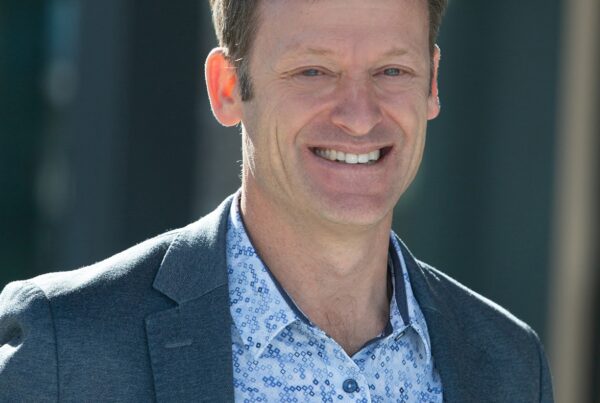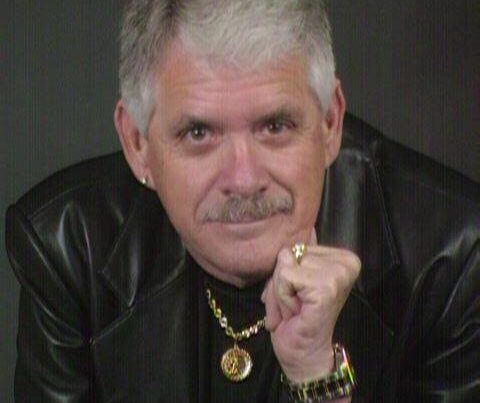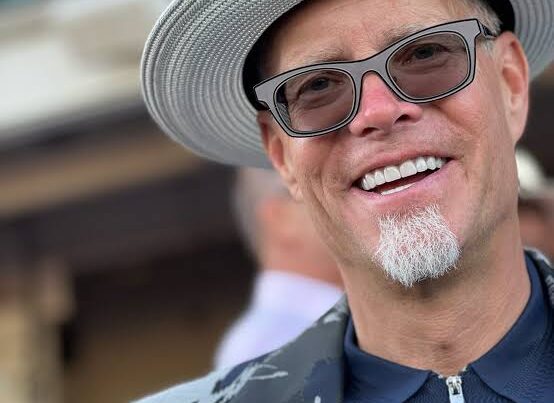Podcast: Play in new window | Download
Subscribe: RSS
How do you create a greater impact without working twice as hard?

Richard Medcalf
Richard Medcalf is an executive coach and leadership consultant to exceptional founders and CEOs and their leadership teams. He describes himself as “what you get if you were to put a McKinsey consultant, a slightly unorthodox pastor and an entrepreneur into a blender”.
His clients are elite performers who’ve already achieved incredible things, and still have the ambition to 10x their impact and influence and achieve something that seems impossible right now. That can involve 1:1 coaching, taking the leadership team to its next level, or scaling high-performance culture throughout the business.
After a Masters Degree at Oxford University, where he graduated top in his year, Richard started his career in a premier strategy consultancy where he rose to become the youngest-ever Partner. He then spent 11 years at tech giant Cisco, firstly elevating Cisco’s relevance in the C-suite of its Fortune 100 customers before being selected for an elite team set up by Cisco’s President and CEO, John Chambers and Chuck Robbins, to catalyze strategic partnerships and new business models.
Richard has advised Founders and C-level execs for 20 years, from Fortune 100 companies to high-growth tech firms, and has overseen more than $2B worth of deals. Keen to marry the disciplines of strategy and leadership in service of his clients, he qualified as a senior leadership consultant and executive coach before founding Xquadrant in 2017.
What We Discuss With Richard Medcalf in This Episode
- Progressing quickly up the corporate leadership ladder
- The intersection between strategy, leadership and purpose
- Implementing impact multipliers to get more done in less time
- Identifying the limiting factors in your organization
- Key impact multiplier questions to ask yourself and your team
Episode Highlights
Tell us a little more about yourself and the work you do with executives.
I’m an Englishman now living in France for over 20 years. I studied at Oxford, got a Masters degree, and got into strategy consulting. It was a random to be honest, but I found it to be a pretty good fit for me in many ways. I was working for a large tech-based company and became a partner in that company. I was then headhunted by Cisco and did various things there. Perhaps the most interesting thing at the end was that I was part of a very small team of 12 people, set up by the CEO of Cisco, John Chambers and the Global Head of Sales, Chuck Robbins, who now himself is the CEO.
They wanted a small team of senior people who could go in at board level and really catalyze new strategic relationships and business initiatives between Cisco and some of its large telecoms and tech partners. It was at that point that a lot of things crystallized. I had done lots of strategy reports in my life but what used to really frustrate me was strategy that sits on the shelf. It reinforced (for me) that what really matters is not the strategy, it is alignment, commitment, and people wanting to do it.
At a deeper level, I realize that I wanted to make a difference with people, as it links to people and results. When you’re a high performer, you’re flying at a high level. Most people think that is super impressive but internally it doesn’t feel that special. For those people that are like that, they know there is another level available to them. They know that they’re still perhaps playing small compared to what they could do.
Yet it’s quite a challenge to reinvent and reengineer a machine that’s gotten you to a certain altitude. What I love to do is work with tech and digital sector chief executives and often their team, to reimagine their next level of impact.
Talk about your own rise to success yourself as a leader. What did you do differently than others?
There were plenty of things I got and did wrong, but I think what really worked for me was investing – freeing up time to make things better. What’s the thing to do now, that’s going to have the biggest return?
For example I was in strategy consulting. It was fairly typical, building excel models, business plans and this kind of thing. Whilst my colleagues would take a blank sheet of excel or perhaps hack a previous model, I would design a template that had all these flexible components so that I could go in and configure a few things and it would suddenly, magically generate all my results.
That task of building the template required some late nights, weekends or taking time I could be using to do other more “productive” work. But the result was that I was able to knock out models that were taking my compatriots a couple of days, in a couple of hours.
When I work with leaders, I’m often getting them to look at, are you spending your time just keeping things going, but you’re going to have to pretty much the same thing next quarter, month, week, or with the next project or customer? What would be the strategic project so that next week and next month is so much better? That freeing up of margin that you can reinvest is super powerful.
Back to my story of modeling, because I didn’t have to spend time building the models, I could spend time presenting them and pouring out insights. That rose my level.
Translating this strategy into leadership…
This is where the leadership and strategy domains intersect. What is the environment that I need to create for my team so that it makes everything easier? What is the language I need to seed into my organization to scale certain ways of doing things and mindsets across the organization? How do I create leverage in this organization, team, and raise the boat for everyone, not just me?
Imagine if everyone in your organization had one improvement project that they were running. It doesn’t have to be big; it could be something they could deliver in a week, month or even a day. Then you create this flywheel.
What have been some of your leadership mistakes along the way?
I think moving into Cisco which was this huge company with tens of thousands of people, from a 300-person company, was a bit of a culture shock. It was fantastic, and I had a good career at Cisco, but when I look back, I didn’t really define my next level when I came in, thinking through what was going to be amazing for me and what kind of impact could I really have in this company in the next 3 years or whatever. That could have been a missed opportunity.
Also, when you have jobs to do and deliverables to make, it can be easy not to invest in building relationships beyond the immediate transactional projects that you’re working on. I think that was a bit of a weakness for a period where I wasn’t really thinking about who could serve in this company, over and above my immediate workload.
The Impact Multiplier framework
One of my frameworks that you heard about in my podcast, The Impact Multiplier CEO Podcast, is about this idea of multiplying your impact. It always comes from addressing the limiting factor. There’s no point working on the wrong thing.
Imagine that you have a team that is failing to engage properly with their stakeholders and as a result have far too high expectation placed upon them and far too little resources. So they are totally incapable of pleasing their stakeholders. Therefore everyone is under pressure, and stressed out and rubbing up against each other and creating friction. What looks like a relationship problem, is actually a stakeholder management problem. I love helping team realize that the problem is not where they think it is.
On a leadership personal level, what is the limiting factor? Is it commitment, energy, collaboration and being able to mobilize other people? Is it insight? What is actually holding your team back?
There are 3 levels – you, your team, and your organization. You can look at each level and there are limiting factors at all levels. My general approach to organizational transformation is that you can’t transform an organization until you have a team that you can then multiply the dynamics of across the organization. If the leadership team is not healthy, then it’s just going to multiply cracks, issues and silos.
How do you find the limiting factors and identify the one that’s really making the impact?
It will often depend on where the organization is. If you have a large organization, I would really be focusing on what is the capacity of the leadership team to actually process whatever issues are in the organization.
How are we doing across these various aspects? Do we have a goal that we are committed to? Do we operate effectively in terms of making decisions, defining roles and responsibilities, and delivering on what we say? Do we have the internal trust and psychological safety? Are we learning as a team? Are we pushing ourselves and finding out what we don’t know?
Also, how are we working with our stakeholders? I love to get stakeholders views on the leadership team. That might be investors, customers, and it might be the reports of the people on the leadership team.
The second part is the multiplication part. Now that we’re seeing how this team is up-leveling, how are you doing to take that and work it with your team? What is it that your team is going to need to change?
What are some of the impact multiplier shifts we can make that we haven’t covered yet?
We talked about freeing up time, this investing to work on these high value tasks. Often when I’m working with an executive or a team, one of the questions is how do I create this margin to create this flywheel and get better and get better? It’s an executive-level productivity question. You don’t need a productivity tip or app to solve this. You need a different way of looking at it.
One resource people might find helpful is a short little email course called Freeing Yourself Up For Strategic Activity. That’s at www.xquadrant.com/go/productivity.
It’s strategic laziness. How do I get the result without having to work twice as hard?
There’s a ceiling of complexity and most people try to hit just by work and effort, and you max out very quickly. The other approach is to change gear and level up. It’s doing different things and working on different problems that actually put you into a different game.
You can’t change gear when you have your foot stuck on the accelerator.
Final thoughts on meaningful impact…
Sometimes I’ve worked with leaders who have left corporate and perhaps made all the money they wanted to make and are asking, what do I do next? Often they can settle for dabbling. Which is fine, but normally behind that is fear. If I really put myself into another project, I’m going to have the same impact on my health and relationships that I did in my corporate life. I can’t and don’t want to do that anymore.
I love to ask people, what’s a 25 year mission for you now? It can be exponentially greater than anything you’ve achieved to date. You can build on all your experience, skills, resources and relationships. Would it be amazing to do that, without the impact on your health and relationships as before?
That’s why I call my company Xquadrant really. There are various reasons, but one is that there always seems to be an either/or choice. You bend those two axes and say, how can I be at the intersection of both those axes? How can I have more impact than ever before, and a whole better life for example?
Episode Resources
- Free Download: 18 questions for your first 100 days in a new leadership role
- Free Email Course: Freeing Up Yourself For Strategic Activity
- The Impact Multiplier CEO Podcast: https://xquadrant.com/podcast
Connect With Richard Medcalf
- Website: https://xquadrant.com
- LinkedIn: https://www.linkedin.com/in/richardmedcalf
Did You Enjoy The Podcast?
If you enjoyed this episode please let us know! 5-star reviews for the Leaders Of Transformation podcast on Apple Podcasts, Spotify, Pandora or Stitcher are greatly appreciated. This helps us reach more purpose-driven entrepreneurs seeking to make a positive impact in the world. Thank you. Together, we make a difference!
Additional Episodes You May Like
- 372: Techno-Resiliency and the Mandate To Be Great with Dr. Rob Graham
- 369: Transforming How Companies Engage Former Employees with James Sinclair
- 347: Scott Miller: Management Mess to Leadership Success!
- 345: Melissa Lamson: Managing Well in a Complex Business Environment
- 249: Roger Nierenberg: The Symphony Of Leadership










